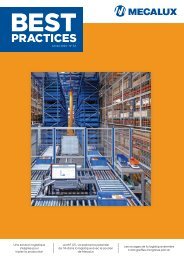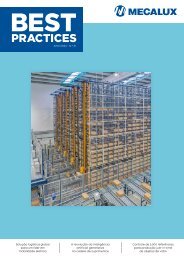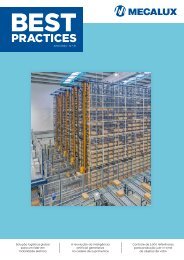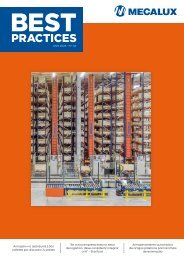You also want an ePaper? Increase the reach of your titles
YUMPU automatically turns print PDFs into web optimized ePapers that Google loves.
The Pallet Shuttle is housed on the cradle<br />
of the stacker crane in a position, slightly<br />
inferior to the pallet support level; said<br />
level is made up of two motorized chains<br />
which pick up and drop off the pallet in<br />
the entry/exit positions. When the stacker<br />
crane is positioned in front of the assigned<br />
location, the shuttle raises with the pallet<br />
on it and introduces it into the channel.<br />
It is placed on top of the support rail in<br />
the available location furthest from the<br />
aisle. The profile is also prepared to make<br />
movements guided by the Pallet Shuttle.<br />
Extractions are done in inverted order.<br />
The Pallet Shuttle is autonomous and<br />
charg es its battery in the cradle of<br />
the stacker crane in an automatic and<br />
straightforward manner. Each shuttle has<br />
eight wheels which provide the correct<br />
distribution of the weight upon the profile<br />
and which help it move smoothly from the<br />
stacker crane into the channels. On each<br />
side of the aisle, rails allow centering elements<br />
to facilitate the movement of the<br />
shuttle.<br />
Case Study I Hemosa<br />
In the warehouse the following elements<br />
have been installed:<br />
- Racks<br />
- Stacker cranes<br />
- Pallet Shuttles<br />
- Entry conveyors<br />
- Exit conveyors<br />
This image represents<br />
a solution similar to the<br />
one used in the Hemosa<br />
installation.<br />
<strong>Best</strong> <strong>Practices</strong><br />
97

















